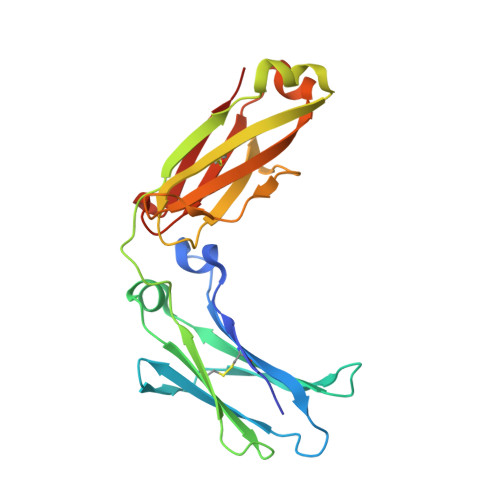Antigen-Induced Allosteric Changes in a Human IgG1 Fc Increase Low-Affinity Fc gamma Receptor Binding.
Orlandi, C., Deredge, D., Ray, K., Gohain, N., Tolbert, W., DeVico, A.L., Wintrode, P., Pazgier, M., Lewis, G.K.(2020) Structure 28: 516-527.e5
- PubMed: 32209433
- DOI: https://doi.org/10.1016/j.str.2020.03.001
- Primary Citation of Related Structures:
6CHF, 6CJC, 6CJX - PubMed Abstract:
Antibody structure couples adaptive and innate immunity via Fab (antigen binding) and Fc (effector) domains that are connected by unique hinge regions. Because antibodies harbor two or more Fab domains, they are capable of crosslinking multi-determinant antigens, which is required for Fc-dependent functions through associative interactions with effector ligands, including C1q and cell surface Fc receptors. The modular nature of antibodies, with distal ligand binding sites for antigen and Fc-ligands, is reminiscent of allosteric proteins, suggesting that allosteric interactions might contribute to Fc-mediated effector functions. This hypothesis has been pursued for over 40 years and remains unresolved. Here, we provide evidence that allosteric interactions between Fab and Fc triggered by antigen binding modulate binding of Fc to low-affinity Fc receptors (FcγR) for a human IgG1. This work opens the path to further dissection of the relative roles of allosteric and associative interactions in Fc-mediated effector functions.
Organizational Affiliation:
Division of Vaccine Research, The Institute of Human Virology, University of Maryland School of Medicine, 725 West Lombard Street, Baltimore, MD 21201, USA.
















